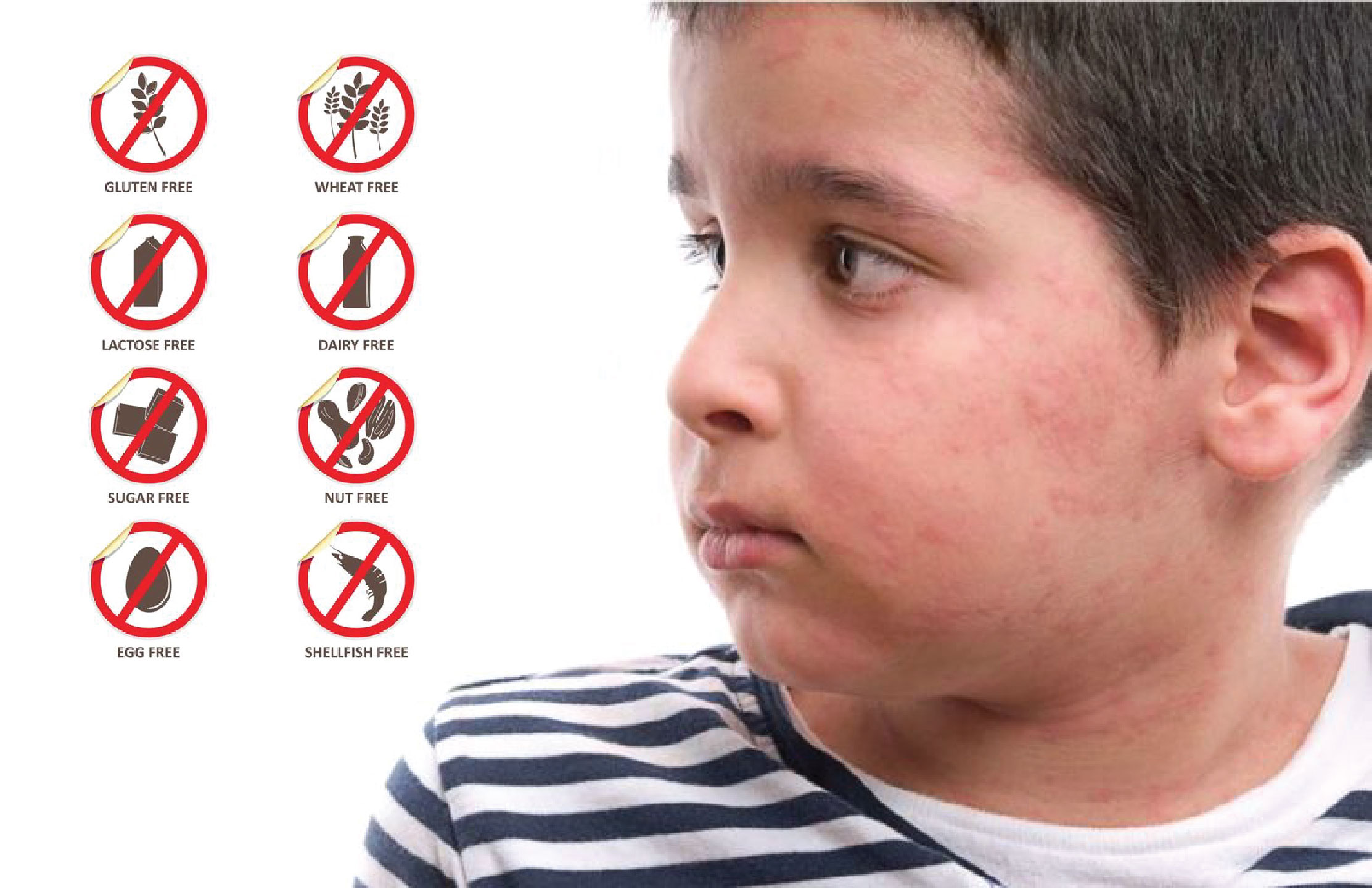Childhood is a magical chapter in life, a time filled with innocence, wonder, and boundless curiosity. Yet, within this amazing tale, there can be a hidden challenge – food allergies. It has become an increasingly prevalent concern in recent years.
For parents, the dining table, once a place of nourishment and togetherness, turns into a place of anxiety.
You need to be well aware of food allergies in children and the difference between food intolerances. The immune system’s responses range from mild discomfort to severe, life-threatening reactions.
To stay informed, know the causes, symptoms, and ways to avoid food allergies in children. This blog will guide you through!
How to Know If the Child Has a Food Allergy or Food Intolerance?
Food Intolerance:
Food intolerance results when the body can’t digest certain foods. It primarily affects the digestive system and shows symptoms like stomach upset. Other signs, including stomach pain, vomiting, diarrhea, headaches, or bloating, are common.
Usually, the symptoms do not show up immediately after taking the triggered food; it might take longer—sometimes after hours or a day. It’s not a life-threatening condition, and to avoid this, it’s better to change the diet & eliminate those trigger foods altogether.
For instance, when a child has lactose intolerance, the body lacks enough of the enzyme lactase, which is needed to break down lactose, a sugar found in milk and dairy products. After consuming this, the child may feel uncomfortable but not life-threatening.
Food Allergies:
Food allergies happen when a child’s immune system sees certain foods as foreign bodies and fights against them. At this moment, the body sends out immunoglobulin E (IgE) antibodies. These being reactive with food cause the release of histamines and other chemicals.
And shows the symptoms of itching in the mouth, vomiting, diarrhea, abdominal pain, trouble breathing, or wheezing. Other possible symptoms include swelling of the tongue, a stuffy/runny nose, or sneezing. Even a single piece of such food can cause the allergy to occur, and the symptoms show up the next minute after consuming the allergy-inducing food.
For instance, when the child has a peanut allergy, the immune system treats proteins in peanuts or peanut-containing foods as harmful invaders and triggers a quick response that is life-threatening in severe cases.
Food That Can Cause Allergy in Children
Food allergies vary widely from one child to another, and the severity of reactions can differ. Therefore, it’s important for parents to be aware of potential food allergies in children, especially if there is a family history of allergies. Introducing new foods gradually and paying attention to any signs of allergic reactions, such as hives, swelling, difficulty breathing, or digestive issues, is important. Here’s a list of common foods that trigger allergies in children, including:
- Peanuts
- Nuts
- Milk
- Eggs
- Soy
- Wheat
- Fish
- Shellfish.
Food Allergy Can Cause Anaphylaxis in Children
Food allergens show symptoms ranging from mild to severe, as mentioned above. In some cases, it results in severe conditions like anaphylaxis. It is a rapid and severe allergic response that can affect the respiratory, cardiovascular, and gastrointestinal systems. It can occur within minutes to hours after consuming an allergy-inducing food.
Common symptoms of anaphylaxis include:
- Difficulty breathing
- Swelling of the face and throat
- Drop in blood pressure
- Rapid or weak pulse
- Hives
- Nausea, and vomiting.
In some cases, anaphylaxis can progress rapidly and result in unconsciousness or even death if not treated promptly. This can be treated with an injection of epinephrine (adrenaline) into the muscle in the front-lateral part of the child’s thigh, which will reverse anaphylaxis by reducing the symptoms immediately.
Can Food Allergy Be Preventable?
No.
There is no such medication to prevent food allergies.
- The only way is to avoid the foods and other similar foods in that food group as recommended by the pediatrician for your child.
- Let the child’s caregivers, teachers, and friends know that the child is having allergic reactions to certain foods.
- Read the food labels carefully before you give the food to know which substances are added to it.
- Consider consulting with a dietitian to create a well-balanced and allergen-free diet to meet your child’s nutritional needs.
- In the case of taking your child out for lunch or dinner to the restaurant, check the menu list beforehand and ask them about the ingredients to be added.
Children with food allergies encounter challenges in various aspects of life, from social events to everyday activities, especially during mealtime. Henceforth, make sure you create a supportive environment at home, in school, and wherever your child will be (like restaurants, functions, etc.).
Seek Medical Attention Immediately When You Notice Food Allergy Symptoms
Food allergy symptoms can manifest immediately or be delayed. Immediate reactions, such as hives or swelling, are more apparent, while delayed reactions, including gastrointestinal issues, may require careful observation.
When you suspect your child has symptoms of food allergies or anaphylaxis, seek prompt medical attention at Dr. Mehta’s.
Early intervention is key to managing allergies effectively and ensuring your child’s well-being. Don’t delay; let’s address these concerns together and keep your child safe and healthy.
Meanwhile, remember, even if the symptoms seem to improve after being given an epinephrine auto-injector by the pediatrician, it is still important to receive a medical evaluation and follow-up care.

